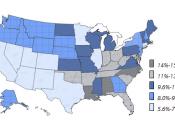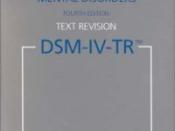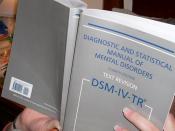Autism is classified by the World Health Organization (WHO) and American Psychological Association as a developmental disability that results from a disorder of the human central nervous system.[1] It is diagnosed using specific criteria for impairments to social interaction, communication, interests, imagination and activities.[2] The causes, symptoms, etiology, treatment, and other issues are controversial.
Autism manifests itself "before the age of three years" according to the WHO's International Classification of Diseases (ICD-10).[3] Children with autism are marked by delays in their "social interaction, language as used in social communication, or symbolic or imaginative play" (Diagnostic and Statistical Manual of Mental Disorders).[4]Autism, and the other four pervasive developmental disorders (PDD), are all considered to be neurodevelopmental disorders. They are diagnosed on the basis of a triad, or group of three behavioral impairments or dysfunctions: 1. impaired social interaction, 2. impaired communication and 3. restricted and repetitive interests and activities.[5]
These three basic characteristics reflect Dr. Leo Kanner's first reports of autism emphasizing "autistic aloneness" and "insistence on sameness."From a physiological standpoint, autism is often less than obvious in that outward appearance may not indicate a disorder. Diagnosis typically comes from a complete patient history and physical and neurological evaluation.
Obsessively stacking or lining up cans and other objects at a very young age may be an early indicator of autism.The incidence of diagnosed autism has increased since the 1990s.[6] Reasons offered for this phenomenon include better diagnosis, wider public awareness of the condition, regional variations in diagnostic criteria, or simply an increase in the occurrence of ASD (autism spectrum disorders). The United States Centers for Disease Control (CDC) estimate the prevalence of autism spectrum disorders to be about one in every 150 children.[7][8] In 2005, the National Institute of Mental Health (NIMH) stated the "best conservative estimate" as...


